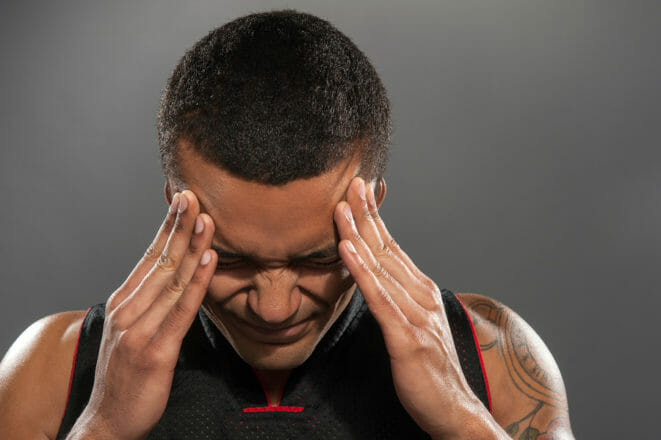A concussion is a mild traumatic brain injury caused by a direct or indirect hit—usually to the head—that aggressively moves the brain within the skull. This sudden movement can stretch and damage brain tissue and trigger a series of harmful chemical and cellular changes that may interfere with normal brain activities. Concussion symptoms like headaches, fatigue, and brain “fogginess” usually come about after the injury and then gradually dissipate within about two weeks for most people. But symptoms can last for much longer for others, and when this occurs, it’s usually referred to as post-concussion syndrome. Unfortunately, there are many factors that are not completely understood about post-concussion syndrome, but our New York City physical therapists offer what is known about the condition and what types of treatment approaches may be used.
The Centers for Disease Control and Prevention (CDC) estimates that about 3.8 million concussions occur in the U.S. each year, but this figure may be even higher since many individuals fail to report concussions. Concussions can result from any traumatic force that causes the brain to move within the skull—such as a fall or car accident—but the majority occur in sports and recreational activities like football, rugby, soccer, hockey, and boxing. Less than 10% of concussions result in a loss of consciousness, which is why anyone who experiences a blow to the head should be evaluated and monitored afterwards for symptoms.
Concussions often lead to both physical and mental symptoms
The immediate physical symptoms of a concussion may include headache, dizziness, nausea/vomiting, fatigue, difficulty sleeping, double or blurred vision, sensitivity to light and/or sound, and problems with balance. Other cognitive and emotional symptoms may include confusion, problems with memory and concentration, fogginess, irritability, depression/anxiety, aggression, personality changes, and mood swings. For about 80-90% of individuals, these symptoms will usually subside within 7-10 days after the concussion. But when symptoms continue to be a problem, individuals are often diagnosed with post-concussion syndrome.
Post-concussion syndrome is a complex disorder in which various physical and mental symptoms—like fatigue, headaches, dizziness, and fogginess—remain long after the concussion has occurred. These lingering symptoms usually only last for a few additional weeks, but can continue for up to 3-6 months in some individuals. Patients with post-concussion syndrome can experience symptoms at rest or in response to too much physical or cognitive (brain-related) activity, which can have a major impact on their social, personal, and professional life.
Studies have shown that approximately 10% of high school athletes experience post-concussion syndrome, while occurrence rates in other age groups range from 5-30%. The causes of post-concussion syndrome and what makes some individuals more likely to experience it than others are not completely understood, but there are some theories as to what might be responsible. Some experts believe that symptoms are caused by structural damage to the brain or a disruption of messages sent by nerves due to the impact of the initial injury. Others believe that symptoms are related to psychological factors, especially because most of these symptoms are similar to those that are often experienced by people with anxiety or depression. In many cases, both the physical effects of the trauma to the brain and the emotional reactions to these effects play a role in the development of symptoms. Older adults, females, and individuals with a history of prior concussions are also at a greater risk for developing post-concussion syndrome.
Managing post-concussion syndrome usually includes a period of rest and allowing the brain’s natural recovery process enough time to heal the damage from the concussion. After this period of rest, active therapies are often prescribed to help alleviate symptoms, but there is no single treatment that’s effective in all cases. Instead, treatment should identify the patient’s worst symptoms and then target them with specific therapies to reduce the symptoms or eliminate their cause. This can be accomplished through acupuncture or a comprehensive physical therapy program, which may include vestibular (balance) therapy, vision therapy, and/or aerobic therapy, depending on what symptoms are most troubling.
Contact our New York City physical therapists if you have lingering concussion symptoms
If you’ve recently experienced a concussion and your symptoms have not yet subsided, you might be dealing with a case of post-concussion syndrome, and our New York City physical therapists would like to help. Contact Dynamic Sports Physical Therapy at 212-317-8303 to schedule an appointment, or click here for more information on post-concussion syndrome.

